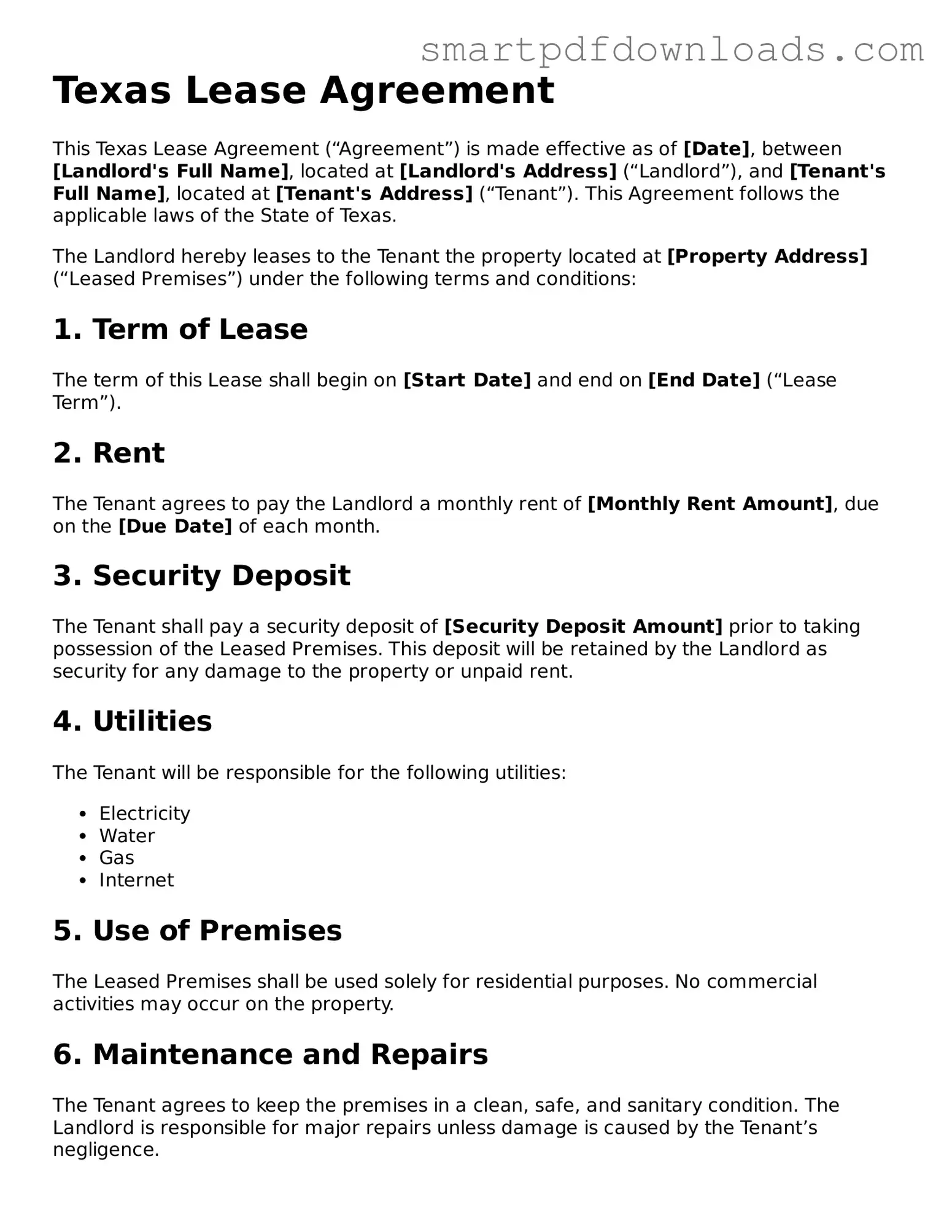Texas Lease Agreement
This Texas Lease Agreement (“Agreement”) is made effective as of [Date], between [Landlord's Full Name], located at [Landlord's Address] (“Landlord”), and [Tenant's Full Name], located at [Tenant's Address] (“Tenant”). This Agreement follows the applicable laws of the State of Texas.
The Landlord hereby leases to the Tenant the property located at [Property Address] (“Leased Premises”) under the following terms and conditions:
1. Term of Lease
The term of this Lease shall begin on [Start Date] and end on [End Date] (“Lease Term”).
2. Rent
The Tenant agrees to pay the Landlord a monthly rent of [Monthly Rent Amount], due on the [Due Date] of each month.
3. Security Deposit
The Tenant shall pay a security deposit of [Security Deposit Amount] prior to taking possession of the Leased Premises. This deposit will be retained by the Landlord as security for any damage to the property or unpaid rent.
4. Utilities
The Tenant will be responsible for the following utilities:
- Electricity
- Water
- Gas
- Internet
5. Use of Premises
The Leased Premises shall be used solely for residential purposes. No commercial activities may occur on the property.
6. Maintenance and Repairs
The Tenant agrees to keep the premises in a clean, safe, and sanitary condition. The Landlord is responsible for major repairs unless damage is caused by the Tenant’s negligence.
7. Termination
Either party may terminate this Agreement by providing [Notice Period, e.g., 30 days] written notice before the end of the Lease Term.
8. Governing Law
This Agreement shall be governed by the laws of the State of Texas.
9. Signatures
By signing below, both parties agree to all terms and conditions set forth in this Lease Agreement.
______________________________
[Landlord's Full Name]
Landlord
______________________________
[Tenant's Full Name]
Tenant
